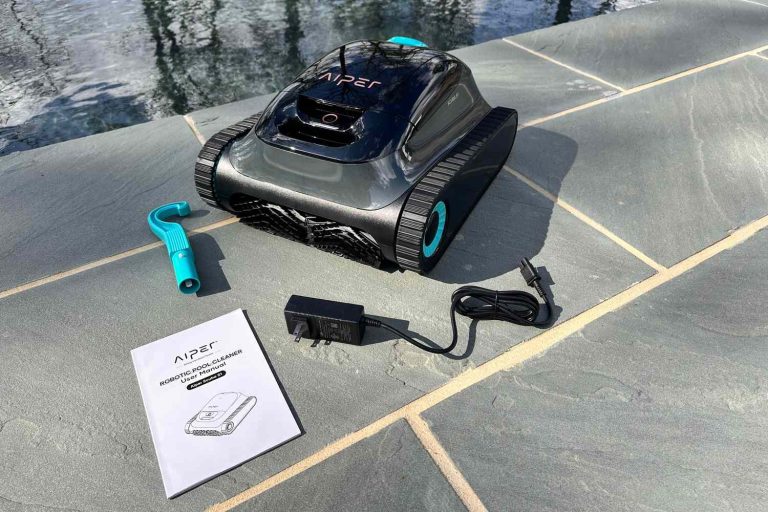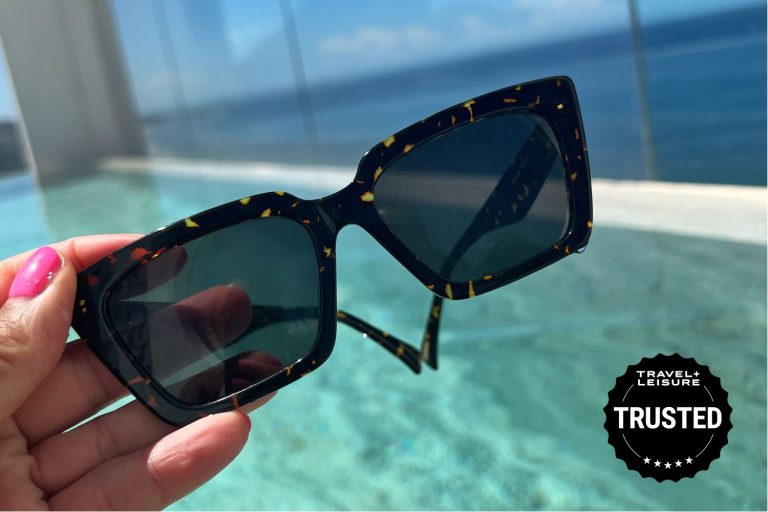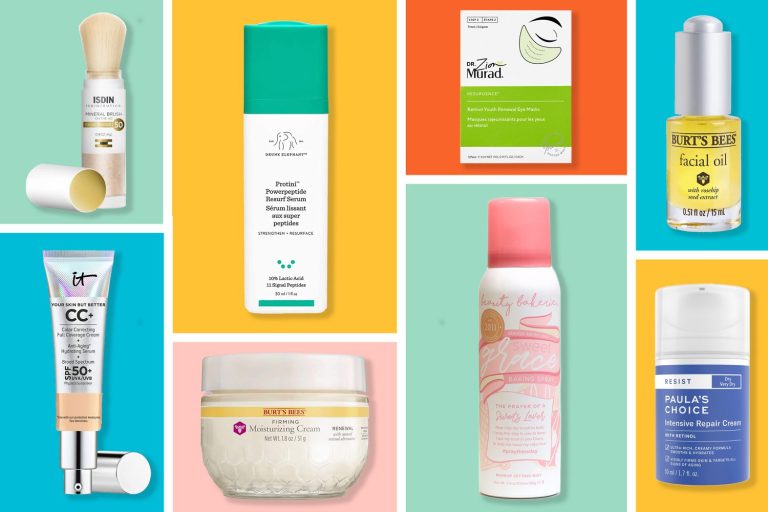9 Best Blackhead Removers: Clear Your Skin with These Top-Rated Solutions
Struggling with stubborn blackheads can be incredibly frustrating, but you’re not alone. These tiny, pesky blemishes often appear when your pores get clogged with oil, dead skin cells, and dirt. The good news? There are effective solutions to help you achieve clearer, smoother skin.
Types of Blackhead Removers
There are various methods to help you tackle blackheads effectively. Each type of remover has its own advantages, so you can find one that suits your needs.
Manual Tools
Manual tools offer precision and control. Comedone extractors, tweezers, and blackhead needles are common examples. Comedone extractors work by applying gentle pressure around the blackhead, helping to lift it out of the pore. Tweezers allow you to precisely remove stubborn blackheads, and blackhead needles can be used to create a small opening for easier extraction.
Pore Strips
Pore strips provide a quick, easy method to remove blackheads. These adhesive strips bind to the oil and impurities in your pores. Once dried, you peel them off, taking the blackheads with them. This type is especially effective for areas like your nose, where blackheads can be more prominent. Regular use can help keep your pores clear.
Electric Suction Devices
Electric suction devices make use of varying levels of suction power. These gadgets work by sucking out the oil and debris from your pores. They come with multiple heads and settings, allowing you to customize the treatment according to your skin type. Electric suction devices can reach deeper than manual tools, offering a more thorough cleanse.
Topical Treatments
Topical treatments often include ingredients like salicylic acid or benzoyl peroxide. These products help to exfoliate your skin, unclogging pores and preventing new blackheads from forming. Typically available as gels, creams, or serums, they can be applied to specific areas or used all over your face. Consistent use can significantly reduce blackhead occurrences.
Review of the 9 Best Blackhead Removers
Blackheads don’t stand a chance with the right tools. Here are the best blackhead removers, categorized for your needs.
Best Manual Tool
Get professional results at home with the JPNK Blackhead Remover Kit. Comprised of stainless steel tools, it offers precision and hygiene. Use the different loop ends to extract blackheads and whiteheads without damaging your skin. Sterilize before and after use to avoid infections.
Best Pore Strip
For quick fixes, try the Biore Original Deep Cleansing Pore Strips. These strips use a blend of bonding agents to latch onto blackheads. Once peeled off, they remove dirt and oil from your pores, resulting in smoother skin. Use weekly for the best results.
Best Electric Suction Device
Experience the power of the PMD Personal Microderm Classic. This device uses suction and exfoliation to revitalize your skin. Multiple speed settings cater to different skin types, ensuring effective blackhead removal while minimizing irritation. Use it once a week for optimal results.
Best Topical Treatment
Fight blackheads with The Ordinary Salicylic Acid 2% Solution. This serum targets clogged pores, dissolving excess oil and dead skin cells. With regular use, it helps prevent formation of new blackheads, promoting clearer skin. Apply it to clean skin before moisturizing.
How to Use Blackhead Removers Effectively
Master using blackhead removers effectively for the best results. Follow these tips for each type of tool.
Instructions for Manual Tools
Clean your face. Start with a clean face to avoid introducing bacteria into pores.
Steam your skin. Use a warm towel or facial steamer to open pores for easier extraction.
Sanitize tools. Ensure your comedone extractor or tweezers are sanitized with rubbing alcohol.
Apply gentle pressure. Use gentle but firm pressure to avoid bruising your skin.
Clean and soothe your skin. Finish by cleaning the area and applying a soothing toner to reduce redness.
Tips for Using Pore Strips
Wash your face. Remove any makeup or oils to ensure the strip adheres properly.
Wet your nose. Moisten the area with warm water for better adhesion.
Apply the strip. Press it firmly onto your nose and wait for it to dry (10-15 minutes).
Peel off carefully. Remove the strip starting from the edges, peeling toward the center.
Moisturize. Apply a gentle moisturizer to soothe the skin post-strip.
Guide to Electric Suction Devices
Read the manual. Familiarize yourself with the device’s settings and instructions.
Start on low. Begin with the lowest setting to avoid skin irritation.
Move in circular motions. Keep the device moving to prevent bruising or red marks.
Avoid sensitive areas. Stay clear of the eye area and broken skin.
Clean the device. Sanitize the nozzle after each use to prevent bacterial buildup.
Applying Topical Treatments
Cleanse your skin. Start with a mild cleanser to remove impurities.
Apply treatment. Use a small amount of the product on affected areas.
Follow instructions. Stick to the recommended frequency and amount to avoid overuse.
Moisturize. Use a non-comedogenic moisturizer to prevent dryness.
Use sunscreen. Protect your skin from sun damage while using active ingredients.
Safety Considerations Using Blackhead Removers
Taking care while using blackhead removers is crucial to avoid adverse effects on your skin. It’s essential to understand potential risks and take precautions.
Risk of Skin Damage
Improper use of blackhead removers can lead to skin damage. Applying too much pressure with comedone extractors might cause bruising, scars, or broken capillaries. Using electric suction devices on high settings can irritate sensitive areas, leading to redness or swelling. Overusing pore strips might strip away natural oils, causing dryness or irritation. Always follow the instructions for each tool and start with the gentlest approach to minimize these risks.
Allergy and Sensitivity Information
Using topical treatments with active ingredients can trigger allergic reactions or sensitivities. Products like salicylic acid or benzoyl peroxide can cause redness, itching, or peeling, particularly if you have sensitive skin. Before applying these treatments to your face, perform a patch test by applying a small amount to a discreet area and waiting 24 hours to check for adverse reactions. If irritation occurs, discontinue use and consult a dermatologist.
Maintenance and Care of Blackhead Removers
Proper maintenance and care of your blackhead removers ensure they work effectively and stay hygienic. Follow these guidelines to maximize the lifespan and effectiveness of your tools.
Cleaning and Sterilizing Manual Tools
Wash your manual tools with warm, soapy water after each use. Sterilize them by soaking in rubbing alcohol for a few minutes, then let them air dry on a clean towel. This prevents bacteria buildup, reducing the risk of skin infections. Always store sanitized tools in a clean, dry place.
Replacing Parts of Electric Devices
Check the manufacturer’s instructions for when to replace filters, suction heads, or other parts of electric blackhead removers. Typically, you should replace suction heads every 1-2 months and filters every 3-6 months to maintain optimal performance. Keep spare parts on hand to ensure your device is always ready for use.
Shelf Life of Topical Treatments
Monitor the expiration dates on topical treatments like salicylic acid or benzoyl peroxide. Most treatments have a shelf life of 12-24 months once opened. Store them in a cool, dry place away from direct sunlight. Using them past expiration can reduce their effectiveness and cause skin irritation.
Alternative Methods to Remove Blackheads
Exploring alternative methods can help you find the best solution that suits your skin’s needs. Here are some effective options to consider.
Natural Home Remedies
Honey and Cinnamon Mask: Mix one tablespoon of honey with half a teaspoon of cinnamon powder. Apply the mixture to your face, and leave it on for 10-15 minutes before rinsing. Honey has antibacterial properties, while cinnamon promotes blood circulation.
Baking Soda Paste: Blend two teaspoons of baking soda with water to create a paste. Gently massage it onto the affected areas, then let it sit for a few minutes before washing off. Baking soda can exfoliate and prevent clogged pores.
Tea Tree Oil: Dilute a few drops of tea tree oil with a carrier oil like coconut or jojoba oil. Apply it to the blackheads using a cotton swab. Tea tree oil has antimicrobial and anti-inflammatory properties that can reduce blackhead formation.
Professional Dermatological Treatments
Chemical Peels: Dermatologists use chemical peels containing alpha hydroxy acids (AHAs) or beta hydroxy acids (BHAs) to exfoliate the skin. This process removes the top layer of dead skin cells and helps unclog pores, reducing blackheads.
Microdermabrasion: This non-invasive procedure involves using a device to gently exfoliate the skin’s surface. It’s effective in removing dead skin cells and clearing pores, making it a popular treatment for blackheads.
Laser Therapy: Lasers can target and reduce sebaceous gland activity, which decreases oil production. This procedure helps in preventing blackhead formation and is suitable for those with persistent blackhead issues.
By considering these alternative methods, you can find the best approach for your skincare routine and keep your skin clear of blackheads.
Conclusion
Choosing the right blackhead remover can make a world of difference in your skincare routine. Whether you opt for manual tools, pore strips, electric devices, or topical treatments, there’s a solution tailored to your needs. Don’t forget the power of natural home remedies and professional treatments for more persistent issues. Prioritize safety and proper maintenance of your tools to ensure your skin stays clear and healthy. By understanding your skin’s unique requirements and using the best blackhead remover for you, you’ll be well on your way to achieving a smoother, more radiant complexion.
Frequently Asked Questions
What causes stubborn blackheads?
Blackheads form when hair follicles become clogged with oil and dead skin cells, which then oxidize and turn black. Excessive oil production, hormonal changes, and improper skincare can contribute to persistent blackheads.
What are some effective blackhead remover options?
Effective blackhead removers include manual tools like the JPNK Blackhead Remover Kit, pore strips such as Biore Original Deep Cleansing Pore Strips, electric suction devices like the PMD Personal Microderm Classic, and topical treatments like The Ordinary Salicylic Acid 2% Solution.
Are there natural home remedies for blackheads?
Yes, natural home remedies for blackheads include honey and cinnamon masks, baking soda paste, and tea tree oil. These methods can help clear blackheads while being gentle on the skin.
What professional treatments are available for blackhead removal?
Professional dermatological treatments for blackhead removal include chemical peels, microdermabrasion, and laser therapy. These treatments provide deeper cleansing and are often more effective for severe cases.
How can I safely use blackhead remover tools?
To safely use blackhead remover tools, clean the tools before and after use, follow instructions carefully to avoid skin damage, and perform a patch test to check for allergic reactions.
What should I consider when choosing a blackhead remover product?
When choosing a blackhead remover product, consider your skin type, the severity of your blackheads, product reviews, and any potential allergens. Consulting a dermatologist can also help you make an informed choice.
How do I maintain and care for blackhead remover tools?
To maintain and care for blackhead remover tools, regularly clean them with antiseptic solutions, store them properly to avoid contamination, and replace them if they show signs of wear or damage to ensure they remain effective.





